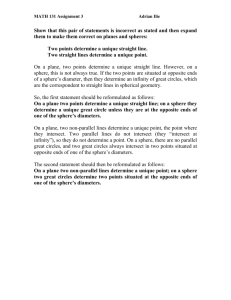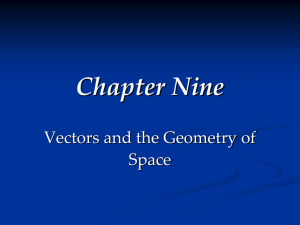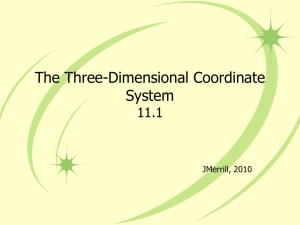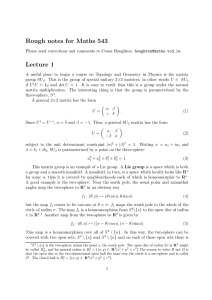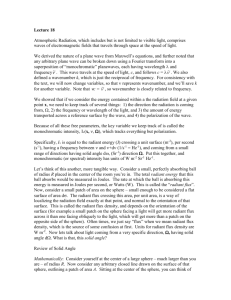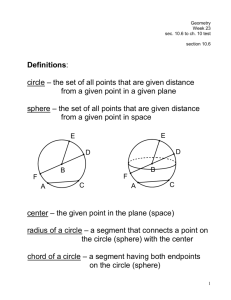Lecture slides 1-3
advertisement
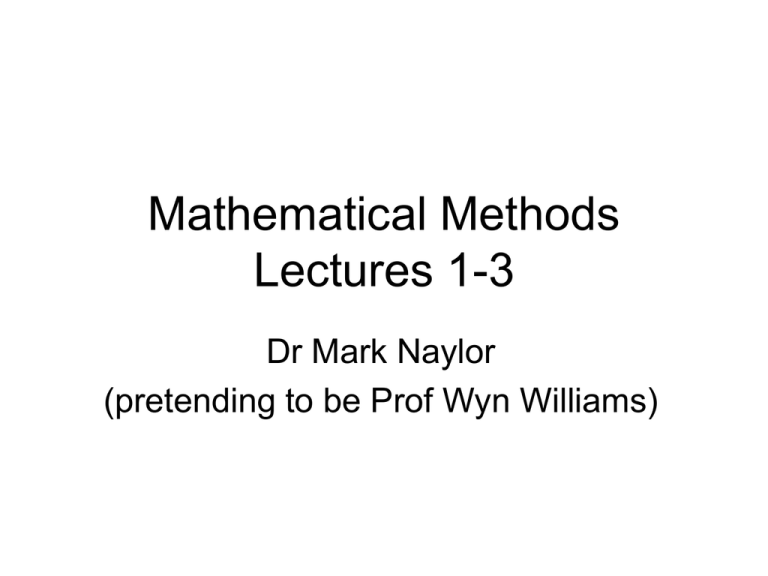
Mathematical Methods Lectures 1-3 Dr Mark Naylor (pretending to be Prof Wyn Williams) Organisation • ~10 Lectures : Wks 3 & 6 - 9 (Oct 5 & 26; Nov 2, 9, 16) Monday 2-3 pm Wks 3 & 6 - 9; (Oct 8 &29, Nov 5, 12 & 19) Thursday 3-4 pm • ~6 Problem classes: Wks 3, 4, 6, 7, 8 & 9 (Oct 8, 15 & 29, Nov 5, 12 & 19) Thursday 4-5 pm • Lectures based on material in notes • Practical classes are to read through notes upto point reached in lectures and complete problem questions • Demonstrators on hand to help and go through solutions in class • Assessment: By problem set out of class Recommended books • Turcotte and Schubert, Geodynamics • R Snieder, A Guided Tour of Mathematical Methods: For the Physical Sciences • L Lyons, All you wanted to know about mathematics but were afraid to ask Vol 1&2 Ground rules • As with any math problem: – Make it easy for us to give you marks – Making a sketch demonstrates your understanding – Showing working demonstrates your ability – Answers only will not receive full marks – Copying will be penalised • Mobile phones off Scalar field Scalar fields – Magnitudes • • • • • • • • • • Temperature Pressure Gravity anomaly Resistivity Elevation Maximum wind speed (without directional info) Energy Potential Density Time… Vector fields Vector fields – Magnitude and direction • • • • • Magnetic field (Scale Earth or mineral) Electric field Water velocity field Wind direction on a weather map Includes displacement, velocity, acceleration, force, momentum… Vector fields coloured by a scalar field Coordinate systems Spherical Cartesian Coordinates systems Polar (2D) Cylindrical (3D) Why change coordinate system? • More physical representation of the problem • Can make the maths easier • Reduce computation time Appropriate coordinate systems • Flying a plane Appropriate coordinate systems • Injector well with 100m completion interval Appropriate coordinate systems • Earthquakes Appropriate coordinate systems • Volcanoes • Fissure eruptions Planetary magnetic field Magnetic field direction Declination Inclination Measuring Earth’s magnetic field Total field Application – directional drilling Application: Magnetisation of rocks (Paleo-magnetism) For more info see: http://gravmag.ou.edu/mag_rock/mag_rock.html Dot product example magnitude of the force distance moved work done = a.b = |a||b| cos t = magnitude of the force x distance moved in the direction of the force Position on the Earth’s surface Great circles Great circles , small circles and orthodromes http://mathworld.wolfram.com/GreatCircle.html Great circles – Finding the angle a b angle Cross product Great circles – Finding the pole a b P Spherical triangles b a P Angle between 2 planes which intersect each other and the Earths surface • On a sphere, the sum of the angles of a triangle is not equal to 180°. • A sphere is not a Euclidean space, but locally the laws of the Euclidean geometry are good approximations. • In a small triangle on the face of the earth, the sum of the angles is very nearly 180. • The surface of a sphere can be represented by a collection of two dimensional maps. Therefore it is a two dimensional manifold. The angle between 2 planes is the angle between their poles b a P Dot product Euler’s Theorem Any line on the surface of a sphere can be moved to any other position and orientation on the sphere by a single rotation about a suitably chosen axis passing through the centre of the sphere: The Euler Pole Plate rotation and GPS Pole of a plate motion
